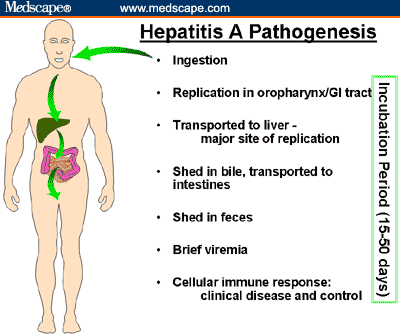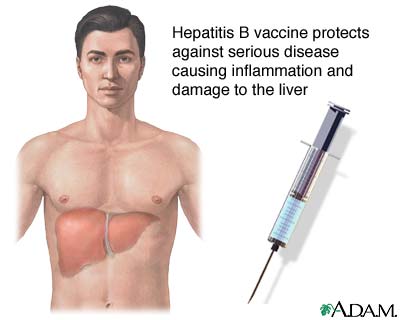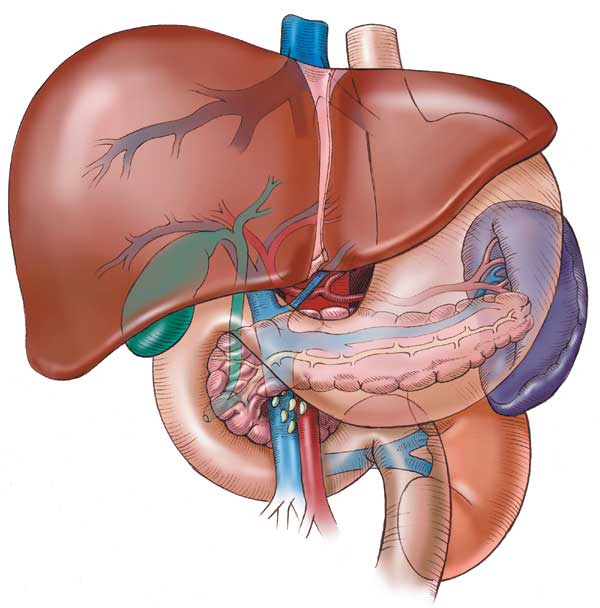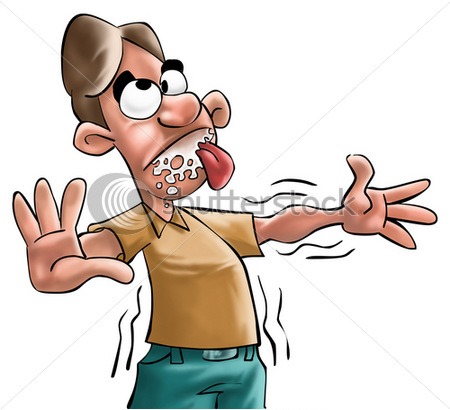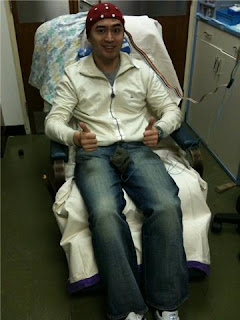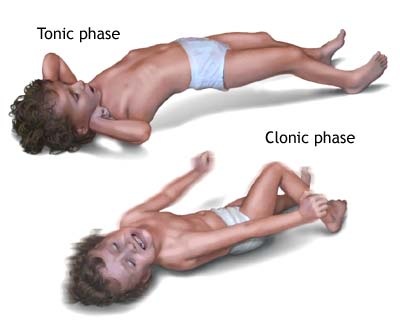How Therapeutic
Breathing Might Help with Depression and Stress?
When you are feeling tense and your mood is low, your
breathing probably will be very shallow and constricted. Shallow breathing can
invoke an emotional imbalance. Shallow breathing causes an inadequate supply of
oxygen in the blood. Deep breathing will allow you to substantially increase
the oxygen supply to your body and brain.
By deepening your breath and keeping the rhythm consistent,
you increase the amount of oxygen that is reaching your lungs, blood, organs,
and cells. This oxygen, of course, is vital for your physiological systems to
operate properly. Deep breathing also relaxes your body and mind so that you
can examine your negative thoughts and replace them with more positive ones.
Some of the most popular, healthy breathing practices stem
from tai chi, qi gong and yoga. But care should be taken when performing deep
breathing exercises, as doing deep-breathing exercises in an incorrect manner
can have adverse effects on the body.
Generally, most of us breathe in an improper way and we get used to shallow
breathing. This is harmful for the health as carbon dioxide may be ejected too
quickly and the nervous system be over-stimulated. Kind of like have your car
engine run at 5,000-10,000 revolutions per minute while standing a stop sign.
When the slower, deeper, more relaxed breathing works in a smooth and flowing
manner, it superbly affects the respiratory system as well as the nervous
system and triggers the reflexive breathing’s relaxation response (also known
as the parasympathetic response) bringing more calm and potential tranquility
to life.
Under extreme or long-term conditions of anxiety and nervousness, the
sympathetic nervous system can be harmed. Most of us don’t know that persistent
stress results in a depletion of nutrients and brings in mental instability.
Here, the parasympathetic nervous system comes to the rescue and helps
neutralize this harmful mechanism. Through the practice of these deep breathing
exercises, the nervous system can be brought into balance in a timelier manner.
Most of us fail to follow our commitment toward exercising and following other
healthy routines. But one thing that can easily be put into practice is
breathing deeply and repeatedly. Make it a point to incorporate deep but
grounded breaths in your regular routines.
It has even been proven scientifically that doing proper deep breathing
exercises is capable of managing depression, blood pressure stress, nervousness,
and trauma recovery. It has been noted often that when these properly balanced
deep-breathing techniques were incorporated with traditional medical
treatments, these treatments worked more effectively.
When a person does not have a healthy breathing pattern, they either do not
take in enough oxygen or do not expel enough carbon dioxide; or they shallow
breathe and try to compensate by high-chest breathing that invites
vasoconstriction and keeps the CO2 levels too low. These in turn lead to mental
fog, exhaustion, and diminished tissue function.
Register your
Breathe
Before you can
address your breathing habits, you need to become aware of them. Stop and take
a moment to listen and observe your breathing. Are you taking long, slow
breaths? Or, are you breathing in a short and almost rushed manner? Do you
breathe mostly in the upper part of your chest, or does your belly move in a
deep rhythmical motion with each breath?
When our
breathing is short and shallow in nature, and mostly located in the upper part
of our chest, it's the type of breathe associated with the fight or flight
response. When we breathe in this way, we are inadvertently signaling to our
body that it is being threatened. And, the natural response of the body to such
stimuli is to increase stress and anxiety levels.
Breathing Exercises
There are multiple researches and approaches on how to let
your breathing to improve your mood, release your stress and anxiety, and allow
functioning better in daily life. We will provide several examples of the exercises,
which are easy to follow and do not require special knowledge, techniques, or
physical training. Read each description carefully, and note all the
requirements to the fine details. Try to follow the guidelines as close as
possible for best results. Be patient, and do not expect magic results immediately,
as your body might need time to accept the instructions. Be patient and persistent,
and you will definitely see positive results in your well-being.
Exercise 1: To become aware of your breathing pattern
The following exercise will enable you to become more aware
of your own breathing pattern:
1. Lie on the floor in a corpse pose in a quiet place. Lie
down on your back with your legs straight and slightly apart, your arms at your
sides and not touching your body, palms up, and eyes closed.
2. Focus your attention on your breathing.
3. Place your hand on your body where it rises and falls. If
this spot is on your chest, your breathing is too shallow and you're not fully
using your lungs.
4. Place your hands on your abdomen and feel how it rises
and falls. Does your chest move with your abdomen? If not, focus on allowing
them to rise and fall together.
5. Concentrate on breathing deeply through your nose,
filling your entire lungs so that your chest and abdomen rise and fall with
each breath.
6. As you breathe, check your body for tension. If you
discover any part of your body under tension, concentrate on those tight or
rigid muscles and let the tension flow away.
By practicing this exercise, you will become more aware of
your breathing patterns and habits.
Exercise 2: To deepen your breathing
1. Lie down on the floor with your knees bent and feet
apart. Your back should be flat on the floor.
2. Mentally examine each part of your body. Is there any
tension in any part of your body? If yes, let it flow away.
3. Rest one hand on your stomach and the other hand on your
chest.
4. Inhale slowly and deeply through your nose, taking the
breath into your stomach so that your hand feels it rise. Your chest should
move slightly along with your abdomen.
5. Practice step 4 until it feels comfortable to be
breathing air into your abdomen. Once you achieve this comfort, inhale deeply
and then blow the air out gently through your mouth.
6. Deep-breathe for five to ten minutes once or twice each
day.
After you have become comfortable with this technique, you
can practice the exercise for up to twenty minutes at a time, whenever you feel
the need to relax and focus your energy.
Exercise 3: To combat depression
A simple, effective technique for combating mild depression
is to increase the depth of your breathing. Close your eyes and focus your full
attention on breathing deeply. This relaxes your body and will open your mind
to experience positive thoughts and creative images. If you increase the depth
of your breath so that you are taking no more than four breaths a minute,
within five minutes this exercise will change the way you feel. Try it.
Exercise 4: To let go of your depression and feel
energized
This exercise lets you to get rid of your depression and
feel energized.
1. Sit on a chair with your back straight and feet flat on
the floor.
2. Reach straight up with both hands.
3. Inhale deeply. Hold your breath and while holding your
breath, squeeze your fists so that the muscles in your arms tighten.
4. Exhale slowly. Keeping your arms tense, lower your fists
to your chest, as if you're pulling down on rubber bands.
5. Repeat steps 2 and 3 a few times.
6. On the final repetition, cross your arms over your chest.
Rest your fingers on the upper outside spots of your chest, with your wrists
crossed in the middle.
7. Drop your chin to your chest.
8. Inhale four short breaths without exhaling.
9. Hold your breath.
10. Exhale slowly through your mouth.
Repeat steps 8-10 for a few minutes, concentrating on the
rhythm of your breath.
Exercise 5: To
relieve anxiety
This is a skill that must be practiced. Try this daily for 10-20 minutes as well as
during periods of anxiety.
1. Place one hand on
your upper abdomen, right below your right cage.
2. Inhale slowly and
deeply through your nose into the “bottom” of your lungs.
3. Pause for a
moment, and then exhale slowly.
4. Take 10 slow
abdominal breaths, keeping your breaths smooth and regular. It may help to slow
your breathing by counting to four (1 – 2 – 3 – 4) as you exhale. Pause briefly
at the end of each inhalation and exhalation.
If you begin to feel lightheaded, take a 20 second break before resuming
your breathing exercise.
5. Five minutes of
abdominal breathing done correctly will have a profound effect on reducing
anxiety and early symptoms of panic.
Exercise 6: To relax
and relieve your stress
The following exercise requires a partner and is effective
in relaxing and energizing you.
1. Lie
on your back. Have your partner put one hand on your abdomen and one hand on
your chest.
2. Inhale
and exhale as in deep, relaxed breathing, but each inhale is taken in two
stages abdomen, then chest. Imagine that you are breathing into your partner's
hand as you fill your belly with air. When your abdomen feels full, continue
breathing into your chest. Watch your partner's hands as it rises.
3. Exhale
fully through the chest and belly simultaneously.
4. Repeat.
It is important to keep a rhythmic rolling effect between abdomen and chest.
Breathe at your natural pace, however.
Sources and Additional
Information:


